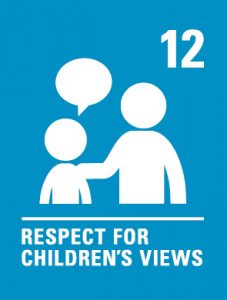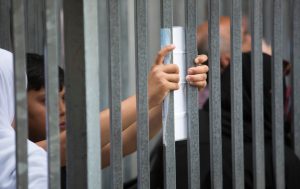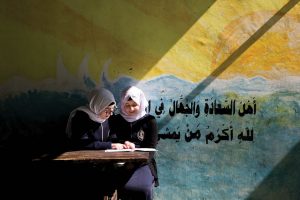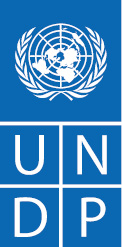 In 2015, world leaders adopted the new Sustainable Development Goals (SDGs) that are an agreed-upon vision that forms the bedrock of a new development agenda that sets the world on a course of action to end poverty, transform lives, and protect the planet.
In 2015, world leaders adopted the new Sustainable Development Goals (SDGs) that are an agreed-upon vision that forms the bedrock of a new development agenda that sets the world on a course of action to end poverty, transform lives, and protect the planet.
Better vaccines, nutrition, and disease control have cut in half the global death rate for children over the past 20 years; globally, the maternal mortality ratio dropped by nearly half. Yet, the indignity of poverty has not been ended for all. Children are overrepresented among the poorest people – one child in five lives in extreme poverty. Globally, youth are three times more likely than adults to be unemployed. Only 35 percent of children worldwide enjoy effective access to social protection; and an estimated 19.9 million children did not receive vaccines during the first year of life, putting them at serious risk of potentially fatal diseases. Children’s rights violations through aggression and sexual violence continue to plague many countries around the world, especially as underreporting and lack of data aggravate the problem.*

For this reason, the seventeen Sustainable Development Goals, with a network of 169 related targets, will continue the journey towards breaking new ground.
The dignity of children and their right to live free from violence and from fear is now recognized as a distinct priority on the international development agenda, particularly since almost a billion children live in countries where the SDGs remain out of reach. Placing children at the center of the SDGs frames their role as initiators and beneficiaries of development, as critical agents of change, and ensures that children are not denied their rights and left behind.
Education shall be directed to the full development of the human personality and to the strengthening of respect for human rights and fundamental freedoms. It shall promote understanding, tolerance and friendship among all nations, racial or religious groups, and shall further the activities of the United Nations for the maintenance of peace.
Article 26, The Universal Declaration of Human Rights
Education is undeniably one of the most important aspects of our lives, providing the key to unlocking our future aspirations. Placing aside the obvious attributes of economic prosperity and development, a quality education grounded in human rights, dignity, and social justice develops the skills and values that help citizens to transform the world they live in. An inclusive education fosters respect, unsettles harmful norms, and breaks down social boundaries. Ultimately, education is liberating; it fosters a vision that reaches beyond borders to the wider possibilities of our increasingly complex, competitive, and connected world.
The human right to education was first recognized in the Universal Declaration of Human Rights in 1948. This has since been reaffirmed by numerous global human rights treatises and conventions which have enshrined it in international law, most notably the United Nations Convention on the Rights of the Child (1989). The right to education has remained high on the development agenda of the international community: education, as one of the 17 Sustainable Development Goals for 2030, aspires to “ensure inclusive and equitable quality education and promote lifelong learning opportunities for all.” But despite the considerable progress on education access and participation over the past years, around 262 million vulnerable children and youth around the world, aged 6 to 17, were still out of school in 2017 with no access to equitable quality education.

Importantly, provisions on the right to education in international law are robust and go far beyond simply requiring all children to be enrolled in school. The human right to education requires a commitment to allowing children to unlock their potential, realize opportunities for employment, and develop life skills. Children also have a right to a suitable and respectful learning environment, where they are allowed meaningful participation and freedom from all forms of violence. A central tenet of human rights treaties is that no individual should be denied access to and fulfilment of their rights or suffer discrimination on any basis, such as their gender, nationality, ethnicity, etc.
Education is highly valued in the State of Palestine, with around 1,310,000 students entering the 2019 scholastic year. Yet, students’ performance is negatively impacted by the wider context, and the provision of basic education persists in a fragile balance. Many Palestinian children have to study in schools that cannot afford heating or electricity, and some face long daily journeys to school punctuated by checkpoints and obstructions.
In Gaza, for example, classes are desperately overcrowded with an average of 37 children per class. Over 70 percent of UNRWA and Ministry of Education schools are forced to operate on a double-shift system, resulting in poorer quality lessons and reduced ability of teachers to properly support students, particularly those who have learning and behavioral difficulties.
In 2018, the UN documented 111 interferences to education in the West Bank affecting 19,196 children; some 50 schools in the West Bank, including in East Jerusalem, are under threat of demolition.
In spite of these challenges, the State of Palestine has achieved some extraordinary educational outcomes. Girls and boys are admitted into basic education at nearly equal rates, and more female students are admitted into secondary schools and universities with no significant regional variations. The Palestinian state is one of the most literate nations in the world, with a 97.2 percent literacy rate in 2018.** School and university enrolment is high by both regional and global standards, and the dropout rate has decreased drastically since the 1990s to 1.2 percent in secondary education. All these factors have contributed to Palestinians boasting one of the most successful and gender-equal educational systems in the region.
These mixed realities of life lived under occupation occasionally capture the attention of the international community. However, it is viewed as panoptical. Every sector – be it housing, industry, health, water and sanitation, etc. – requires its own analysis. Education is no exception. Reframing the current situation of education in the State of Palestine from a human rights perspective is an essential part of reaching a genuine and transformative solution that demands that all children receive a full, quality education.
Rather than viewing the human rights framework as abstract or simply background narrative, it provides an important basis for decisions and actions. A human rights-based approach renders explicit the legally binding obligations of all nations to ensure that human rights are protected and fulfilled. In doing so, it enables rights holders to demand meaningful change and accountability. It also sets a higher standard of what we expect a basic education to be. As long as barriers to the provision of education exist, Palestinian children are being robbed of their rights.
*Report of the Secretary-General on SDG Progress 2019
**PCBS – 2019 International Literacy Day


